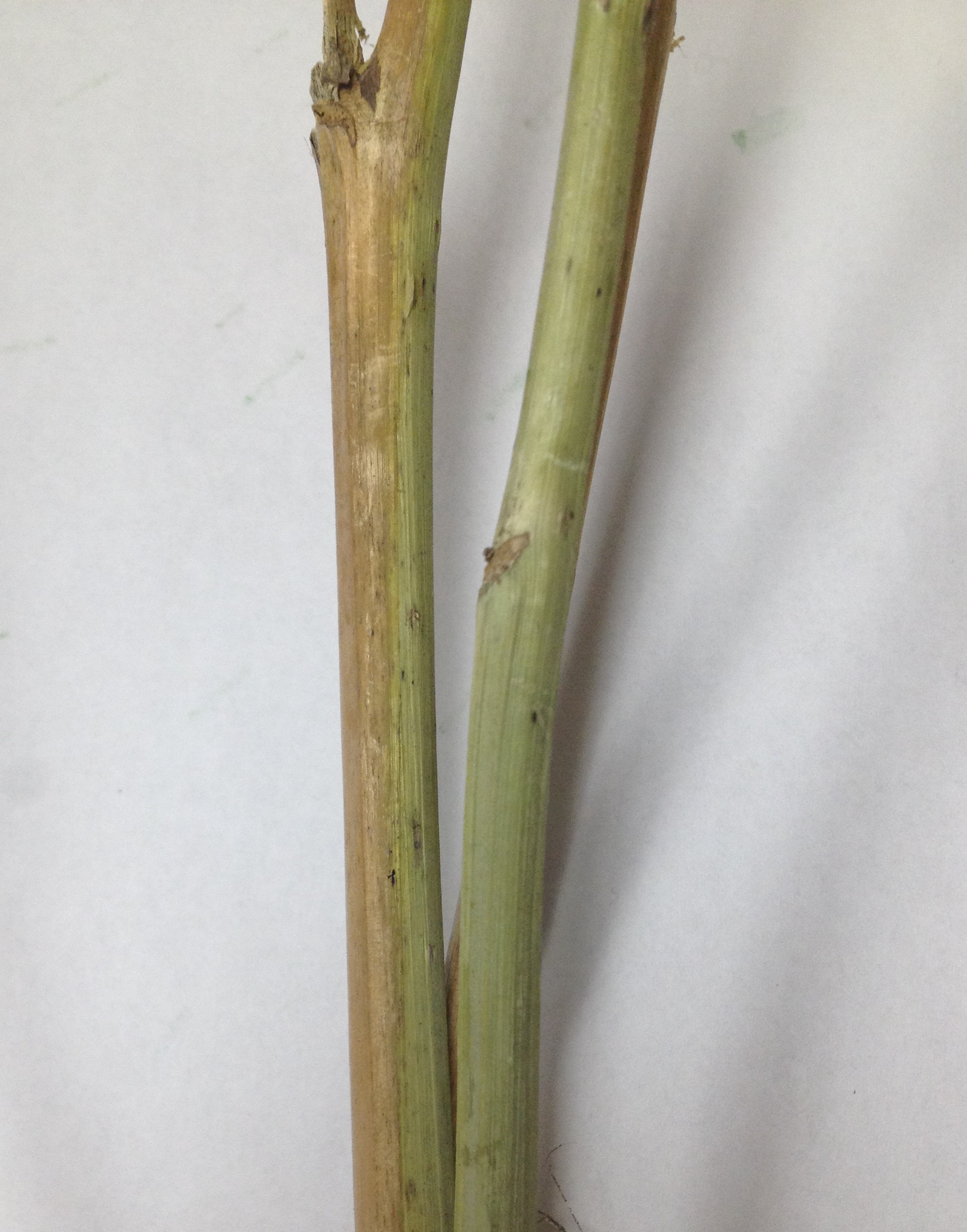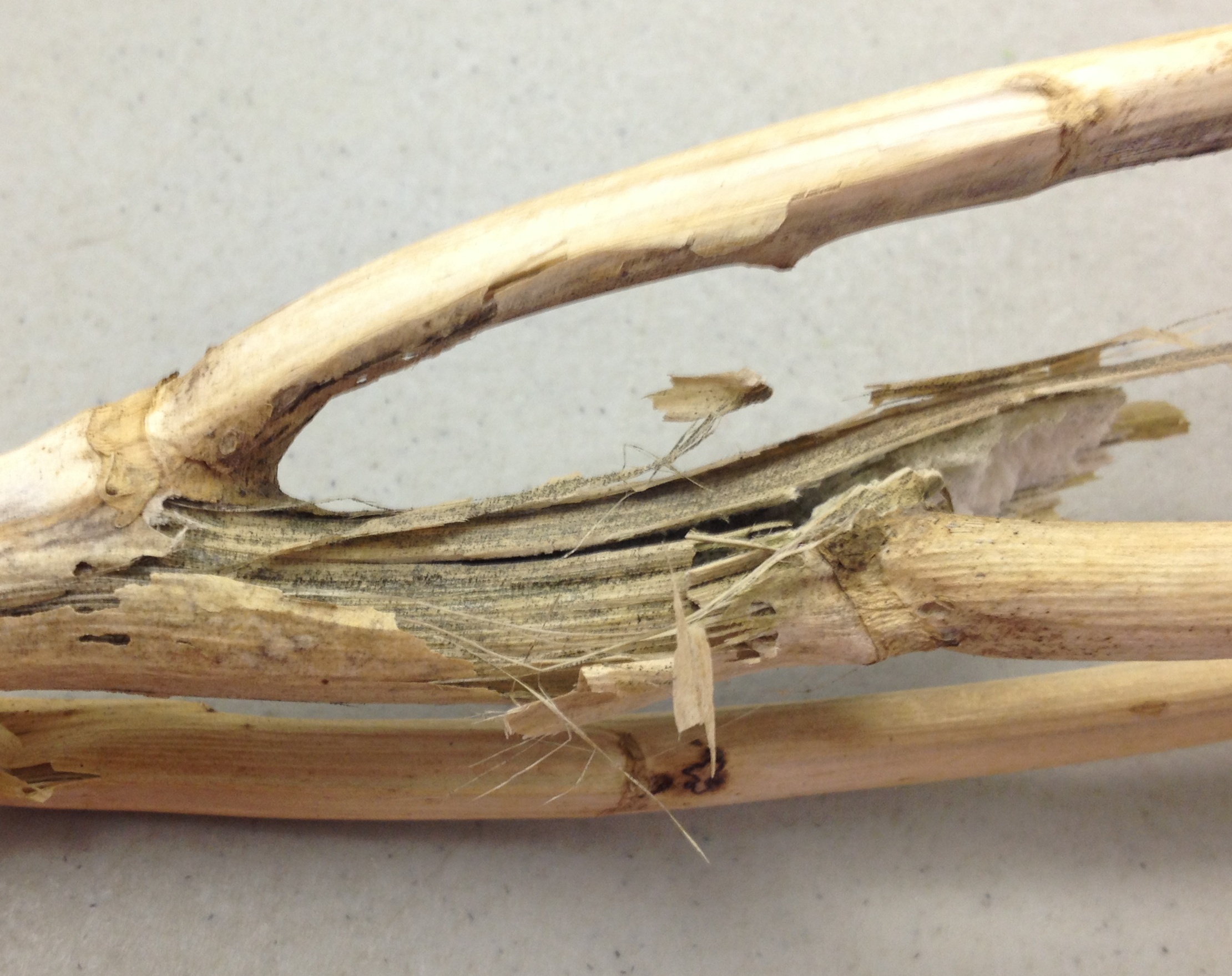Verticillium Stripe (Wilt) in Canola
Symptoms of Verticillium stripe in canola most often appear near the end of the season as the plants begin to ripen.
While the stem is still green, a vertical yellow or brown band extending up one side of the stem may be visible.

As the plant fully ripens, the outer layer of the stem epidermis peels back to reveal black microsclerotia just below the surface.

These microsclerotia appear as black pepper-like spots that are visible to the naked eye. If a cross-section of an infected stem is examined under a microscope, microsclerotia will also be visible in the inner pith tissue representing the colonization of the vascular tissue by the fungus.
Scouting techniques
The best time to scout for Verticillium stripe in canola is at swathing, but it is even possible to identify this disease after harvest as microsclerotia will continue to develop on the stubble. Infected plants will become more obvious after harvest as they will turn grey-black as they senesce.
Control tips
There are no foliar or seed treatment fungicides currently registered for control of Verticillium stripe in canola. In addition, there is no host resistance in canola varieties at this time for V. longisporum.
In northern Europe, where this disease has been an important issue for more than 30 years, it is recommended that growers leave three years between canola crops. This allows the pathogen populations to naturally decline in the soil, but, due to the long-lived microsclerotia, rotation alone is not enough to manage this problem effectively.
As V. longisporum is a soil-borne pathogen, biosecurity practices can help mitigate the spread of this disease on- and off-farm. Biosecurity practices include equipment and tool sanitation, controlling off-farm traffic, monitoring seed/feed/fertilizer sources, and developing an on-farm biosecurity plan.
References
Gladders, P. 2009. Relevance of verticillium wilt (Verticillium longisporum) in winter oilseed rape in the UK. Home-Grown Cereals Authority: Research Review No. 72.
Inderbitzin, P. & K.V. Subbarao. 2014. Verticillium systematics and evolution: How confusion impedes Verticillium wilt management and how to resolve it. Phytopathology 104: 564-574.
Johannson, A. 2006. Verticillium longisporum, infection, host range, prevalence and plant defence responses. Licentiate thesis. Swedish University of Agricultural Sciences, Uppsala.
